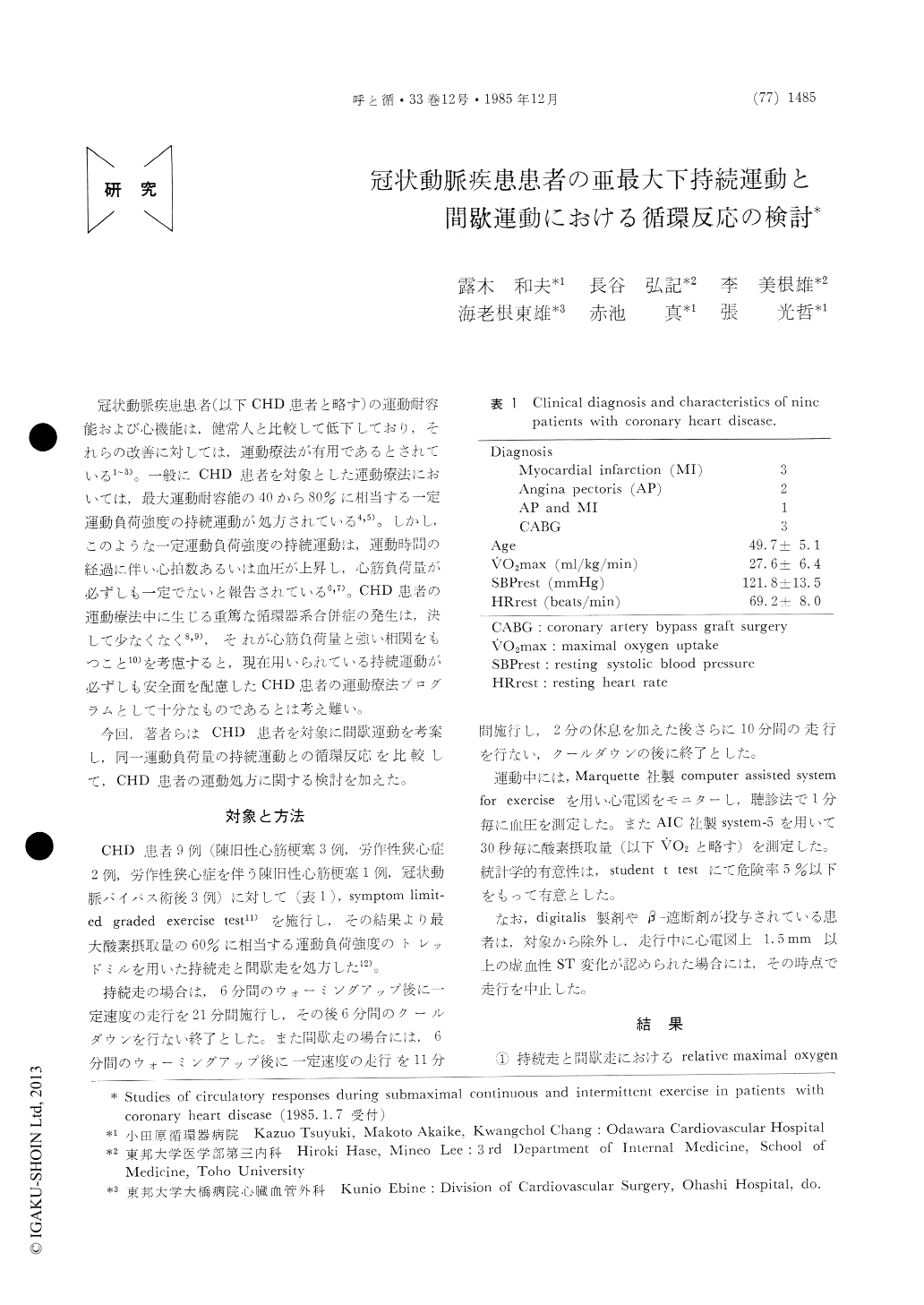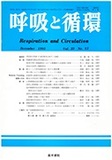Japanese
English
- 有料閲覧
- Abstract 文献概要
- 1ページ目 Look Inside
冠状動脈疾患患者(以下CHD患者と略す)の運動耐容能および心機能は,健常人と比較して低下しており,それらの改善に対しては,運動療法が有用であるとされている1〜3)。一般にCHD患者を対象とした運動療法においては,最大運動耐容能の40から80%に相当する一定運動負荷強度の持続運動が処方されている4,5)。しかし,このような一定運動負荷強度の持続運動は,運動時間の経過に伴い心拍数あるいは血圧が上昇し,心筋負荷量が必ずしも一定でないと報告されている6,7)。CHD患者の運動療法中に生じる重篤な循環器系合併症の発生は,決して少なくなく8,9),それが心筋負荷量と強い相関をもつこと10)を考慮すると,現在用いられている持続運動が必ずしも安全面を配慮したCHD患者の運動療法プログラムとして十分なものであるとは考え難い。
今回,著者らはCHD患者を対象に間歇運動を考案し,同一運動負荷量の持続運動との循環反応を比較して,CHD患者の運動処方に関する検討を加えた。
Studies comparing intermittent and continuous treadmill running, and prescribing the same relative work load of 60% of each patient's maximal oxygen uptake (%VO2max) were conducted on nine pa-tients with coronary heart disease. During the stud-ies, comparisons were made of changing rates in %VO2max, systolic blood pressure, heart rate and pressure rate product.
%VO2max in both intermittent and continuous running periods was steady throughout the studies, and no significant difference was evident between them. Changing rates in systolic blood pressure, heart rate and pressure rate product gradually increased during the runnig periods in both types of runnings, however, each of these rates decreased temporarily after each interval of intermittent running. Changing rates in heart rate between the two types of runnings were not significantly differ-ent. In contrast, however, changing rates in systol-ic blood pressure and pressure rate product at the end of intermittent running periods were significant-ly lower than at the end of continuous running periods. Although there was no significant difference in relative work load between the two types of runnings, the maximum ischemic ST changes during intermittent running were less than during contin-uous running. Additionally, the elapsed time of ischemic ST changes in intermittent running was longer than that in continuous running.
In conclusion, results of the study indicate that intermittent treadmill running is more useful than continuous treadmill running for cardiac rehabilita-tion in coronary heart disease patients.

Copyright © 1985, Igaku-Shoin Ltd. All rights reserved.


